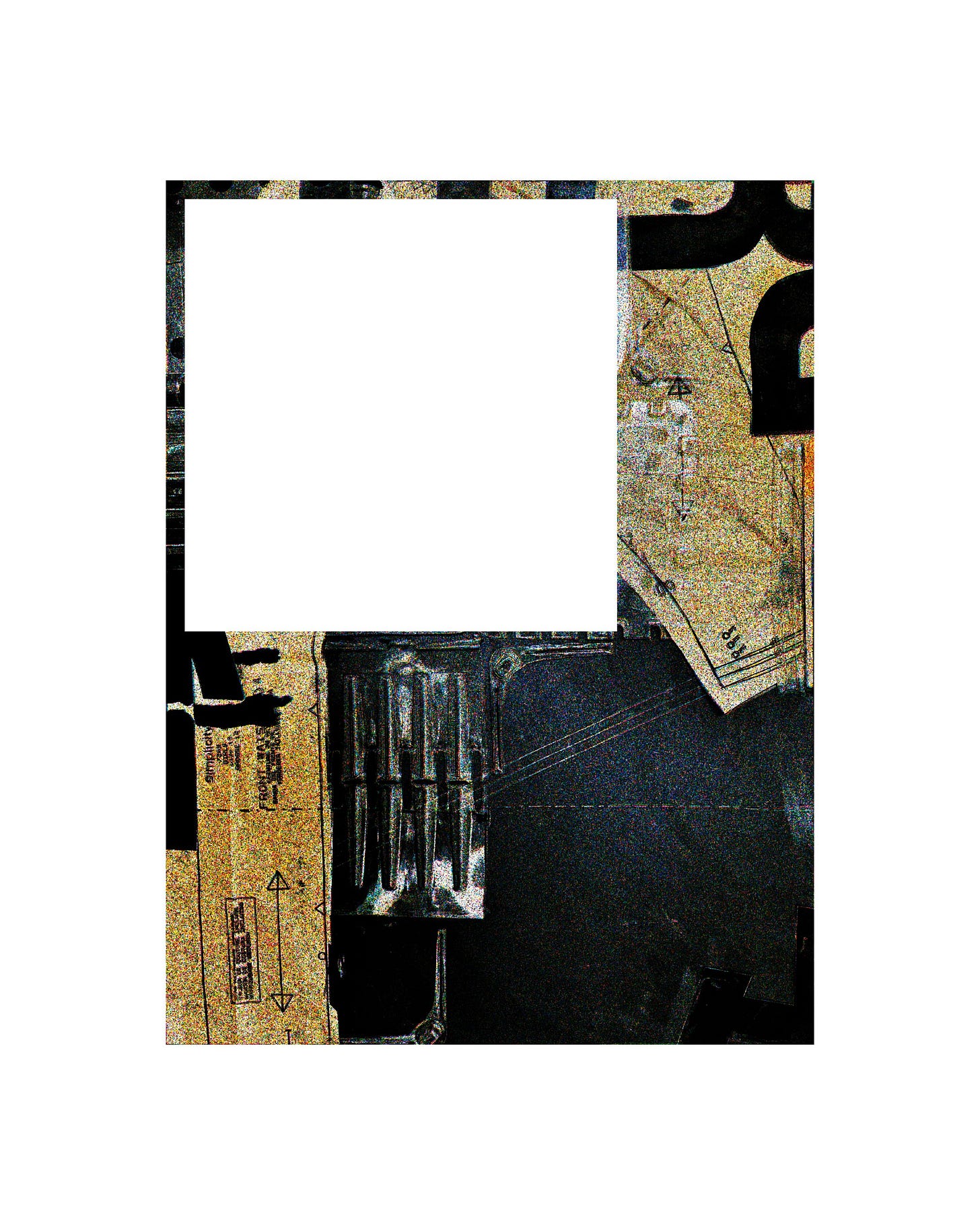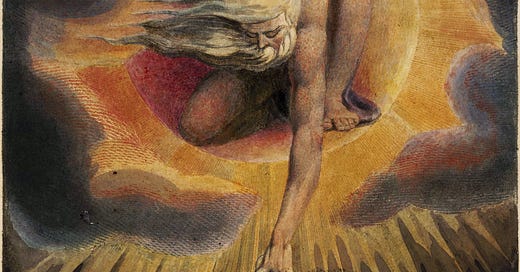For years the default radio station in my car has been Classical Minnesota Public Radio, a “listener-supported classical music station.” I’m often fascinated by the radio host’s logic when persuading listeners to support the station between songs. It typically goes something like this:
Classical music is scientifically proven to help you focus.
Classical music helps you unwind after a long day.
Classical music promotes better sleep.
When we speak of art’s utility in such ways, we speak of it like a tool. By design, tools have functions, and the more efficiently they perform their functions, the more useful we deem them. Every tool is a means to an end. A good lamp lights the room; a good pocket knife stays sharp—and in your pocket. Deliberating over effective means to specific ends is what philosophers call instrumental reason.
Oddly enough, this is the kind of reasoning radio hosts often employ to “sell” classical music.

On an instrumental view of art, I should invest in my local classical music station because the “functions” of music help resolve pain points in my life—excess stress, lack of focus, etc. Art, like a pocket knife, has utility. True enough, I guess. But problems arise when we then conclude that whole works of art—paintings, novels, symphonies—are no more than market commodities to be manufactured, advertised, and sold like any other problem-solving tool.
In his book Art and Faith, painter-scholar Makoto Fujimura argues that our cultural assumptions about art have been contorted by the logic of the Industrial Revolution, which sees life in terms of “bottom-line utilitarian pragmatism.” If it’s not useful, efficient, or quantifiable: scrap it. Hence the City Council member who praises the vibrant local arts scene for “supporting the economy” and “creating jobs.” Hence the anxiety of every fine arts student faced with the inevitable question: What will you do with your degree? Within the paradigm of the Industrial Revolution, one might even feel pressure to cook up practical reasons for the utility of listening to a Mozart piano concerto.
Of course, during the actual Industrial Revolution, artists and poets found themselves grappling with the wide-ranging repercussions of commercialism, technique, and utilitarian ideology. One thinks of William Wordsworth’s sonnet “The World Is Too Much With Us,” which begins:
The world is too much with us; late and soon, Getting and spending, we lay waste our powers;— Little we see in Nature that is ours; We have given our hearts away, a sordid boon!
Or, in his 1799 novel, Lucinde, Friedrich Schlegel called industry and utility “the angels of death who, with fiery swords, prevent man’s return to Paradise.”1 And we cannot forget William Blake’s “dark satanic mills.” It’s a truism to note that Romanticism was an artistic-cultural reaction to the capitalistic logic of the Industrial Revolution. But Fujimura reminds us that that logic has hardly abated; on the contrary, it’s been gaining steam for over 200 years.
Survival Value?
We find a still more drastic example of instrumental reasoning in recent evolutionary accounts of art. Since humans retained only those traits that helped them procreate as they evolved, the story goes, art must have helped our ancestors attract mates or, you know, ward off poisonous snakes. Scientists admit they’re still working on an airtight theory. But even if such a theory of the evolutionary origins of art were to surface, it would necessarily be a theory of art’s utility—i.e. how music, poetry, and painting had (and has?) instrumental survival value.
And so what if it does? What after all is wrong with listening to classical music to regulate one’s emotions, or painting as a means of therapy? (Never mind what could be wrong with starting a rock band to attract “mates.”) I do not wish to deny that interacting with art may have practical upshots. I am instead concerned with conflating the realms of intrinsic and instrumental values. For what finally distinguishes a painting from a hack saw is not that one impresses my friends at dinner parties while the other cuts wood. The difference lies in how the painting alone elicits an aesthetic experience that we deem good for its own sake—that is, good regardless of the numerous practical ends for which we might put it to use.
At least for rational beings like ourselves. When we find delight in the plot of a novel, the proportions of a sculpture, or the melody of a song, we encounter art’s intrinsic worth. We intuit that the experience is good just because, even (or especially) when it serves no obvious practical purpose beyond itself. To clarify, I am not suggesting that all art is equally valuable or beautiful or praiseworthy. I am claiming that aesthetic experiences are intelligibly choice-worthy, that art—like friendship, like knowledge, like life itself—can and must be treated as its own end and not a means to some other.2
I generally dislike the artsy characters in films and novels who refuse to take “real jobs” and contribute to society because they are overly absorbed with their craft. (And it hardly needs to be added that countless actual artists have led irresponsible, destructive lives.) Even so, the devout musician or painter reminds us that, while investing one’s life in art is not always practical, it is—or can be—inherently valuable. This seems to be what C.S. Lewis had in mind when he wrote that art “has no survival value; rather it is one of those things which give value to survival.” In other words, art is unnecessary. But that may be why we need it.
Gratuity & Goodness
In the same sentence just quoted, Lewis adds that the universe itself, like art, is also unnecessary, “for God did not need to create.” Theologians have long drawn this conclusion from the basic premise of God’s aseity or self-sufficiency. If God is God—and so depends on nothing and no one to subsist—he does not create out of need but sheer plentitude, pleasure, and love. God creates freely. Consequently, we should not be surprised by the sheer gratuity of our universe: the bewildering diversity of apparently use-less lifeforms and phenomena at every strata of existence and, above all, the contingency of created being itself.
To be strictly literal, the creation account of Genesis does not state that God created the world good, though that’s clearly implied. Instead, it depicts God pausing at the close of each day to behold the goodness of the world he was creating, as if to remind us that goodness was and is truly there, ingredient in the stuff of creation.
Drawing on these passages, Fujimura suggests that humans mirror God’s first act of creation when they freely create works of art; far from setting out to build tools for fixing the world (though we need people to do this, too), artists tap into the abundance of existence to create something new, beautiful, or provocative, something unnecessary yet good.3
Getting to Know Ourselves
In the end, we may still wonder what is truly at stake here. Why so much effort to distinguish intrinsic and instrumental reasoning in the arts? It seems to me that if we allow the language and logic of efficiency to engulf our art studios, concert halls, and publishing houses (not to mention our classrooms and homes), we will gradually surrender art as a basic component of the common good in favor of more “practical” undertakings. STEM labs. Politics. E-books. We may even, if unwittingly, come to see art as a waste of time.
And it is—in a sense. It’s a waste in the way Mary “wasted” a pound of expensive perfume to anoint the feet of Christ. Art will never justify its existence on the scales of efficiency, will never withstand the scrutiny of cost-benefit analysis. And for precisely this reason, art can usher us into realms of goodness, truth, and beauty that transcend utility and foster our well-being as humans. When Rilke wrote that “A work of art is good if it has risen out of necessity,” he was not speaking of art’s instrumental value; he was putting a finger on a mystery at the heart of creativity: art is unnecessary, yet we, formed in the image of God, feel we must create it.
(A.I. Excursus: I believe that last point helps explain why so many have felt a visceral aversion to both the prospects and the “outputs” of so-called Generative Artificial Intelligence. However impressive its generations, however obsequious its servitude, AI is an insult to the artistic impulse of which Rilke wrote. Moreover, because this impulse originates in the cultural mandate generally and the imago Dei specifically, we might as well admit that many instances of AI are an insult to human imagination as such. As I’ve written elsewhere, one of the troubling ironies of Artificial Intelligence is how it threatens to diminish essential human capacities such that we end up needing AI to “teach” us how to be human again. By all means, give the bots your most mind-numbing, most soul-shattering bureaucratic chores. They won’t mind, possessing neither minds nor souls. But let us do the arduous work of art ourselves, which both nourishes our humanity while reminding us of our divine origins and end. Susannah Black Roberts recently issued what she has named a #StayHumanMovement, calling for artists, musicians, writers, and rational creatures everywhere to forswear any AI that threatens to enervate (Wordsworth: “lay waste”) our human powers. She writes: “we must face down that blank page with our own fortitude, our own intelligence, our own internal resources; scorning any ‘prompts’ or AI boilerplate.”)
Well. Fujimura avers: “Art is another way of knowing the world.” We might add that art is also a way of knowing ourselves. For it awakens us to the reality that we are the sorts of creatures whose flourishing depends on the integral goods of this world, which call out to us in every work of art worthy of the name.
Sources
Ferber, Michael. Romanticism: A Very Short Introduction. Oxford: Oxford University Press, 2010.
Finnis, John. Natural Law & Natural Rights, Second Edition. Oxford: Oxford University Press, 2011.
Fujimura, Makoto. Art & Faith: A Theology of Making. New Haven, CT: Yale University Press, 2020.
Lewis, C.S. The Four Loves. New York: Harcourt, Brace, Jovanovich, 1960.
Rilke, Rainer Maria. Letters to a Young Poet. Trans. Charlie Louth. New York: Penguin Books, 2012.
Quoted in Romanticism: A Very Short Introduction. Michael Ferber. Oxford: Oxford University Press, 2010, p. 100.
See John Finnis, Natural Law & Natural Rights, Second Edition. Oxford: Oxford University Press, 2011, pp. 100-127
Of course, only God creates ex nihilo, from nothing. The artist makes use of the “raw materials” of creation to create something derivative yet good.





